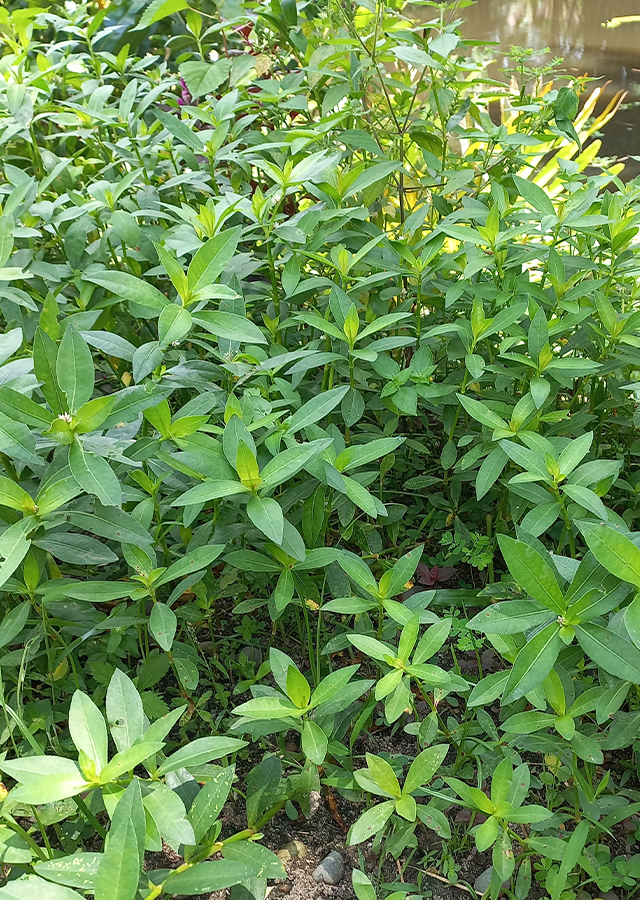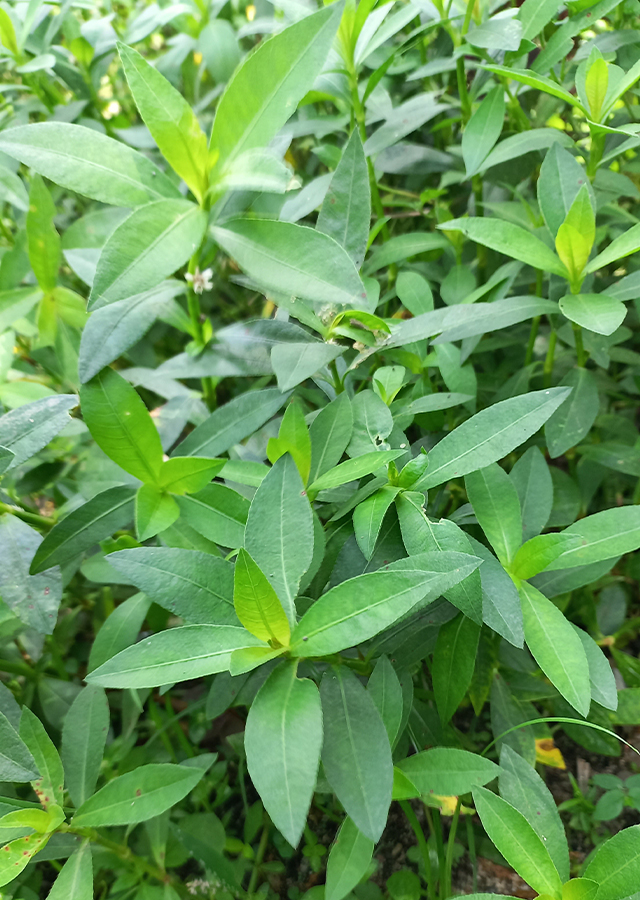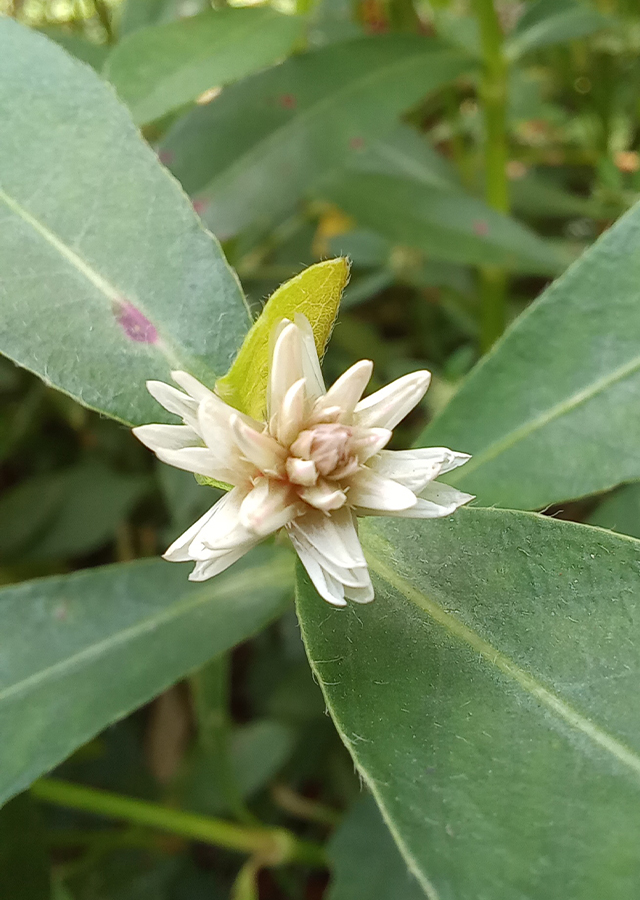Alligator Weed
Alternanthera philoxeroides (Mart.) Griseb.
Amaranthaceae
Location in our garden
Aquatic



Synonym
Achyranthes aphylla (Glaz.) Standl.
Alternanthera philoxerina Suess.
Brandesia martiana Gillies ex Moq.
Habitus
Herbaceous. A herbaceous, perennial plant with creeping stems that form roots at the nodes. The stems usually become ascending towards their apex and can be 55 - 120 cm long
Part Used
Leaves
The Whole Plant
Growing Requirements
Full Sunshine
Habitat
Aquatic
Wetland
Riverbanks
Forest
Coastal
Terrestrial
Overview
Originating from tropical America, but often cultivated as an aquatic in other tropical areas, and often naturalized, e.g. in China, United States, Indonesia, and very locally elsewhere in Malesia. The plant is sometimes harvested from the wild for local use as a food and a medicine. It has been used in aquaculture to remove pollutants from the water and as a source of biomass, though this should be done with care because of the plant's high propensity to become an invasive weed.
Vernacular Names
Phakpet-nam (Thai), Kanabaw (Myanmar).
Agroecology
Alternanthera philoxeroides is found in tropical to warm temperate zones. Succeeds on a wide range of substrate, from sand to heavy clay. When floating on water, it may be rooted in the bank or substrate, or can be free floating. The plant grows best in aquatic sites but may establish as a terrestrial species in wet and poor pastures and on irrigated lands. It prefers level areas of shore or shallow water where it is protected from wave erosion.
Morphology
- Stems - base like creeper, roots borne at joints, upper part erect, hollow, with branches, young stem and axil white or reddish brown hairs, glabrous when old.
- Leaves - opposite; petioles 3-10 mm long, leaves obovoid or obovoid-lanceolate, 3-5 cm long, 1-1.8 cm wide, apex obtuse, with tips, base gradually narrow, margin narrow, upper with adnate hairs, margin with hairs. Capitulums solitary at axil, common pedicel 1-4 cm long, bracts and bracteoles dry membranous, white, persistent; tepals white, oblong; stamens 5; filaments base connate to cup-shaped, anthers 1-chambered, degenerative stamens top divided into narrow strip; ovary 1-chambered with short stalk and 1 ovule, stigma nearly sessile.
- Flowers - heads stalked or occasionally sessile; tepals 1-veined, shining white, filaments united at base into a distinct tube.
- Fruits - not produced in Malesia.
Cultivation
In Indonesia seed is never produced and propagation is only vegetatively.
Chemical Constituents
Amino acid, cardiac glycosides, steroids, alkaloids, flavonoids, tannins, phenolic compounds, phaeophytin a, oleanolic acid, β-sitosterol, 3β-hydroxystigmast-5-en-7-one, α-spinasterol, 24-methylene cycloartanol, cycloeucalenol, phytol, alternanthin B, and N-trans-feruloyl-3,5-dimethoxytyramine.
Traditional Medicinal Uses
- Considered anti-viral, antibacterial, and hepatic-protective.
- Studies have suggested clearing heat, cooling blood, disinhibiting urine and detoxicating properties.
- Plants are considered as medicine for coughing up blood due tuberculosis, hematuria, cold and pyrexia, measles, encephalitis B, stranguria with turbid urine, eczema, anthracia and furunculosis, venomous snake bite.
- An extract of the plant is used medicinally in India to treat 'female diseases'.
Part Used
Reference Sources
- Fern, Ken. Useful Tropical Plants. (2021). Alternanthera philoxeroides. http://tropical.theferns.info/viewtropical.php?id=Alternanthera %20philoxeroides. 08-10-21.
- Plant Resources of South East Asia. (2016). Alternanthera philoxeroides. https://uses.plantnet-project.org/en/ Alternanthera_philoxeroides_(PROSEA). 08-10-21.
- School of Chinese Medicine. Medicinal Plant Images Database. (2007). Alternanthera philoxeroides. https://libproject.hkbu.edu.hk/ was40/detail?lang=en&channelid=1288&searchword=herb_id=D00734. 08-10-21.
